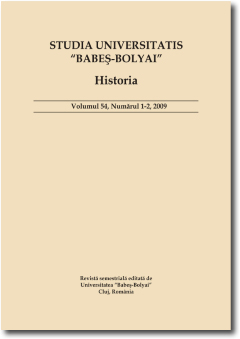« LE BANQUET DES SOPHISTES » : REPRÉSENTATION FUNÉRAIRE, REPRÉSENTATION SOCIALE SUR LES STÈLES DE BYZANCE AUX ÉPOQUES HELLÉNISTIQUE ET IMPÉRIALE
“THE SOPHISTS’ BANQUET“: FUNERARY REPRESENTATION, SOCIAL REPRESENTATION ON THE STELAE OF BYZANTIUM IN THE HELLENISTIC AND ROMAN PERIODS
Author(s): Madalina DanaSubject(s): History
Published by: Studia Universitatis Babes-Bolyai
Keywords: iconography; scrolls; representation; diffusion; scholar.
Summary/Abstract: “The Sophists’ banquet“: funerary representation, social representation on the stelae of Byzantium in the Hellenistic and Roman periods The study of the funerary banquet, an iconographical motif borrowed from the East, was facilitated at Byzantium by the discoveries made in the city’s necropolis, which mostly date to the late Hellenistic and Roman Imperial period. For the latter, it is even possible to follow the diffusion of the Byzantine model on the Western Pontic coast, given the stelae which show a number of significant objects, some of them connected to the intellectual domain: papyrus scrolls, inkwells, styli, briefcases or book bags. The question was raised of the measure in which these objects represent an indication of trade or else of a socially glamorised employment of leisure, which would thus echo the circulation of regional or Microasiatic models; in the end, just their association with more significant objects can turn them into trade insignia (symbola tès technès) or else of a veritable interest for the intellectual life. Finally, the question of the status of women was raised, who, at Byzantium and in the regions affected by the spread of this motif, appear, in the staging of the couple, to share their husbands’ tastes; as well as the issue of the status of the scholar, “friend of the Muses” or professional of intelligence. The scroll was put up as the symbol of an honourable life, more than the symbol of education. It encloses a statement of social position which passes, starting with the late Hellenistic period, through the image of the scholar.
Journal: Studia Universitatis Babes-Bolyai - Historia
- Issue Year: 59/2014
- Issue No: 1
- Page Range: 345-371
- Page Count: 27
- Language: French

